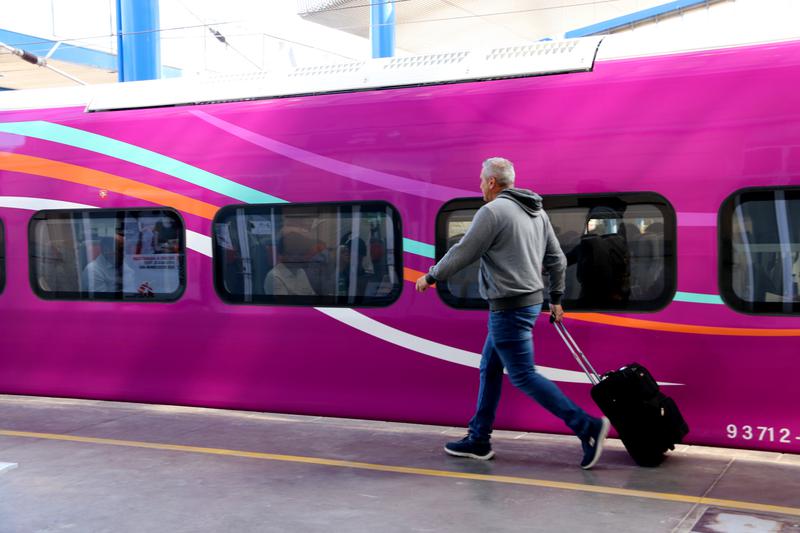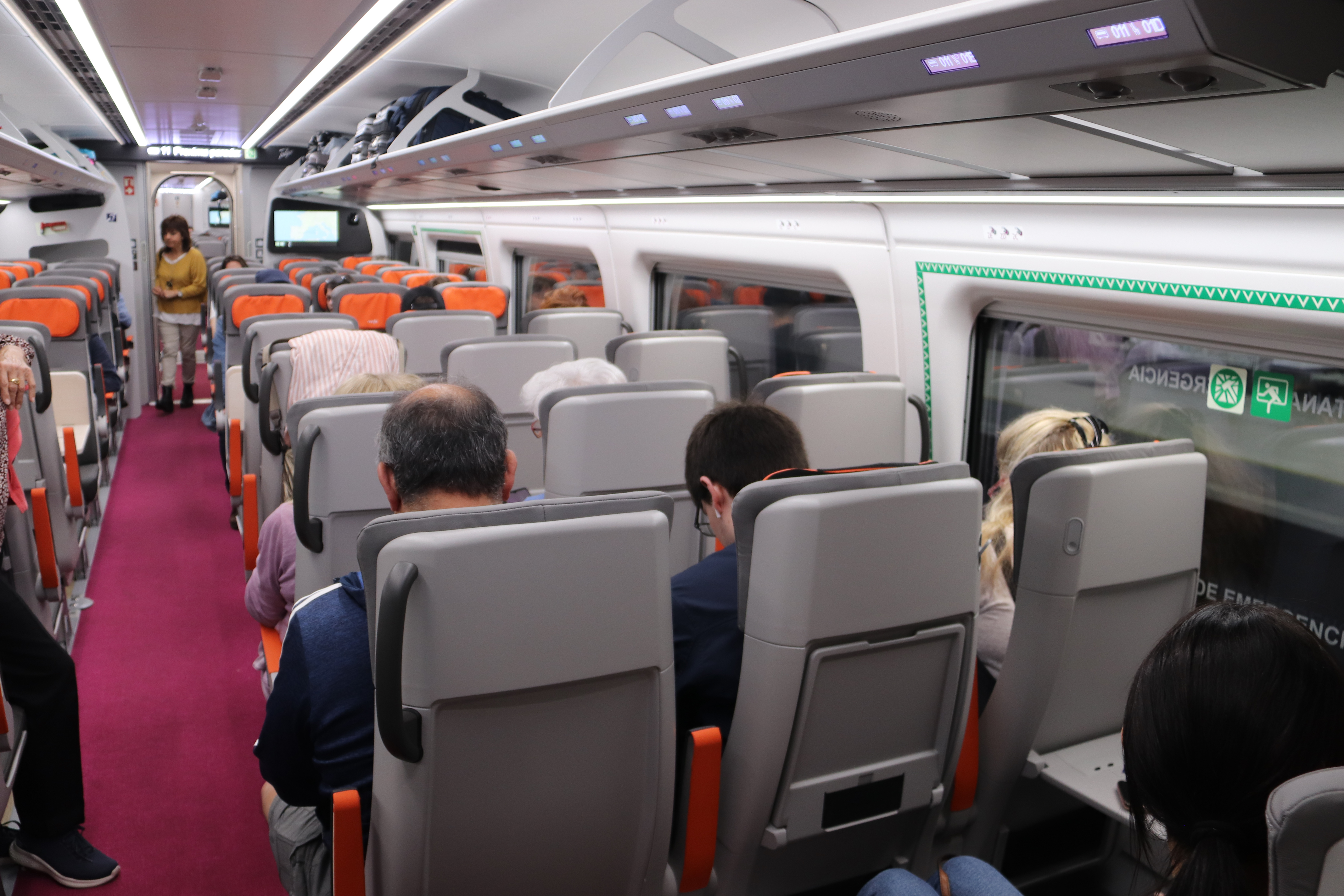Renfe unveils new low-cost high-speed trains with capacity for 580 passengers
After long delays from manufacturer, trains will connect Barcelona and Madrid daily

Spain's high-speed operator unveiled its newest addition to the low-cost high-speed train line between Barcelona and Madrid, Spain, on Tuesday with a capacity of 581 passengers.
The trains can reach 300 kilometers per hour and will connect the Catalan northern train station of Figueres-Vilafant with the Spanish capital stopping at Girona, Barcelona, Camp de Tarragona, and Lleida.
These are the "most modern" trains that allow Renfe to "be more competitive and to move more people to more destinations," Ricard Rivera, head of Renfe's high-speed service between Catalonia and Madrid.
Avlo, which stands for 'Alta Velocidad Low Cost' (low-cost high-speed), was Renfe's answer to the liberalization of the high-speed train market in Spain and the entry of other operators such as French Ouigo and Italian Iryo.
Until December, Avlo has already sold over 121,000 tickets for passengers to travel with the newest addition, the S106 model, which will replace the former vehicle, the 112 series. Overall, Avlo will increase its weekly capacity from 24,000 seats to 28,000.
"It is an honor to offer this new model," Rivera said a few minutes before arriving at the Camp de Tarragona train station, 30 minutes away from Barcelona.
Compared to the previous model, the S106 has a capacity of 581 people, 144 more passengers than its predecessor with 438 seats. One of the main characteristics of the seating distribution is that it has a three-two configuration, similar to the one on a plane.
"The new offer adapts to the new train schedules, stops, and destinations," Rivera told journalists on the first train with passengers of this new model.
One of the new models' main characteristics is the train's comfortability, as many passengers told Catalan News.
"The new seat distribution does not limit the space compared to the ones that have two rows. It seems like we are traveling on a plane, which many of us are already used to," Luz Muñóz told Catalan News.
"We do not feel we are in a narrow space. It is a correct train," Javier Algueró, one of the passengers, told this media outlet. It has been a while since he used a low-cost high-speed train, however, he was traveling to Madrid because of a business trip.
Meanwhile, Júlia Gómez took the same route a month before, just before the new trains were added, and it was a surprise for her.
"It is much more comfortable, and I feel everything is better," she said, even though she was sitting in a two-seat area and not in the new three-seat configuration.

Renfe has received 10 of the 30 units of the S106 train manufactured by Spanish company Talgo, four of them are already in use in the Barcelona-Madrid low-cost train line, while one more is still pending.
The other trains will serve to offer high-speed routes between Madrid and Spain's northern region of Asturias and new destinations in the northern-western region of Galicia.
However, in Catalonia, the inland station of Lleida-Pirineus and the southern station of Camp de Tarragona "will hugely benefit" from the new additions, Rivera said before adding that it will also have a positive impact on many other stations such as Girona, and Zaragoza.
Long delays
Talgo was expected to deliver the Avril, or S106 trains, in 2021, but some modifications pushed the delivery date to July 2022.
However, the first units did not start driving across Spain's rails until May 2024.
For this reason, Renfe has been claiming they would file complaints against Talgo because of the delays.